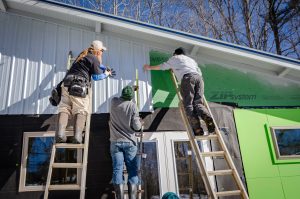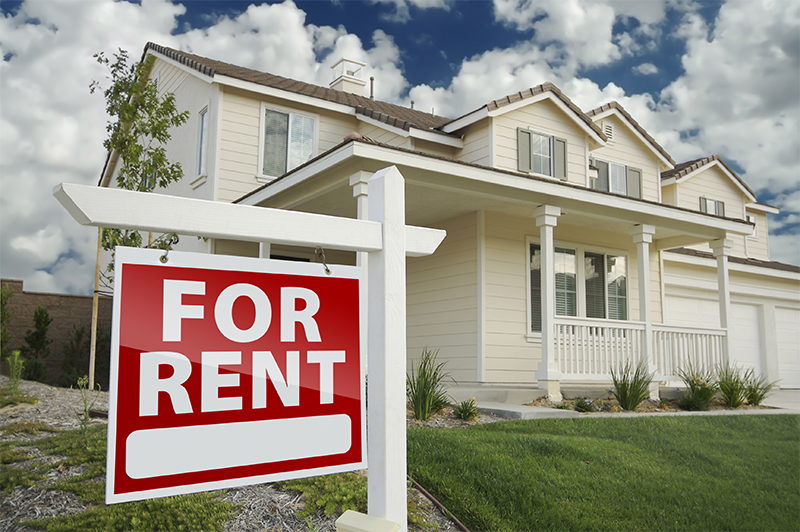
One of the hottest trends in real estate in recent years has been build-to-rent. Its growth rivals that of multifamily development and single-family rehab rental conversions, and the reasons for the growth of build-to-rent are the same as growth in the other rental sectors.
Six reasons build-to-rent could become the new normal in rental properties:
- The cost of real estate is rising everywhere. For that reason, many potential homeowners are forced out of the market. Since they can’t afford to own their home, they turn to renting.
- Low housing supply. There just aren’t enough houses for everyone who wants them. That means many potential homeowners must wait, and as they continue to wait the price of real estate continues to escalate. Meanwhile, rental properties look like an attractive alternative.
- Amenities. Renting a single-family home is different than renting an apartment. For starters, renters can have a backyard, and for many pet owners, that’s a must.
- Build-to-rent is easier to manage for property investors. With single-family rentals, property owners must manage properties in different locations. Sometimes, that means driving from one neighborhood to another in the same city, and sometimes it means managing properties in different cities altogether. A portfolio of 100 properties could stretch for miles. The build-to-rent model allows property owners to manage the same number of properties in a portfolio that sit side by side. It’s easier to manage and more cost-effective in the long run.
- The rental market is strong. The rental market is strong everywhere. Single-family rentals are surging because it feels like homeownership even though it isn’t.
- Remote work means renters can live anywhere. The pandemic has caused a surge in remote work opportunities. As a result, people are moving away from larger cities to smaller cities and rural areas without having to change jobs.
Build-to-rent communities are popping up in many places around the country and are a great opportunity for investors with good cash flow, a solid credit rating, and a proven strategy.
Where Single-Family Rents are Growing the Fastest
Make this another reason the build-to-rent model is growing in popularity. Rent growth in the U.S. is surging.
In January 2022, rent growth grew by 12.6 percent year-over-year, the fastest increase in 17 years. In 2021, rent growth slowed for detached properties while it increased for attached properties. That’s one more reason renters are driven toward single-family properties rather than multifamily residential units.
Miami and Orlando, Florida top the list of cities with the highest year-over-year change in rent growth. Rent growth is also strong in rust belt cities. Phoenix, Arizona is the city with the third-highest year-over-year change in rent growth. The state with the most cities on the list is Texas. Austin, Dallas, and Houston all have strong year-over-year rent growth.
Renters benefit from build-to-rent community living because they can build long-term relationships with their neighbors, have better home security, and can benefit from upscale community amenities that apartment living doesn’t offer.
Investors benefit from build-to-rent community investment because they can usually charge higher rents and have lower tenant turnover. With rent growth going north, that’s one more reason for investors to get in on the build-to-rent trend, and we’re likely at the beginning stages of that trend in 2022.
The Build-to-Rent Opportunity for Lenders
Lenders can also benefit from the build-to-rent opportunity. With single-family rentals, lenders can offer short-term loans in smaller amounts, which is popular among fix-and-flip investors. With build-to-rent, the projects are larger, and the lending is for a longer term. That means more profits for lenders.
The rise in real estate prices has squeezed many would-be home buyers out of the market. Younger home buyers can’t buy starter homes in many places around the country because they simply can’t afford them. That increases the build-to-rent opportunity, especially in the starter home market. As millennials, Gen Z, and other young adults get married and have children, the likelihood that they will begin searching for a home to buy goes up. With a low inventory of housing supply, their chances of getting the home they want go down. That’s why build-to-rent is perfect for these young home buyers.
With build-to-rent, however, lenders aren’t working with residential home buyers on their first mortgage. Rather, they are working with the builders on commercial loans. Commercial loan interest rates tend to be higher than residential mortgage interest rates.
Another factor that favors lenders is that build-to-rent renters tend to be premium or higher-class renters than multi-family renters. Because build-to-rent communities often have better amenities—such as parks and playgrounds, lakes, ponds, upscaled beautification models, larger residential units, and more—families are willing to pay higher rents and builders are willing to take out larger loans to create a community that enhances the surrounding neighborhood. These communities are often walkable communities and may be gated. These features enhance the living conditions of the residents and therefore create a win-win-win scenario for renters, builders, and lenders.
With build-to-rent, lenders can be more confident that they are mitigating their risks with profitable investments.
Build-to-Rent Will Continue to Be Hot for the Foreseeable Future
There are plenty of reasons to be confident that build-to-rent will continue to be a hot sector in real estate development. Here are a few, according to Arbor’s Q3 2021 single-family rental report:
- Single-family occupancy is high and rising
- Rent growth consistently hits all-time highs as rents continue to climb
- Single-family housing valuations are increasing, which means more equity for the rental property owners
- Loan-to-value ratios are edging down
- Debt yields for single-family rentals are also dropping
- Loan default rates in the sector are declining, showing a strong outlook for lenders
- While down from 2018, single-family rental housing starts are high indicating that builders are on top of the opportunity
Overall, single-family rental construction was up 66 percent during the pandemic. Demand for single-family rentals is up and shows no signs of easing. Homeowners who can’t afford to buy are renting and build-to-rent gives them the feel of owning with all the benefits of renting. Investors looking for another opportunity to diversify their real estate portfolios or develop a solid buy-and-hold strategy should consider build-to-rent.



